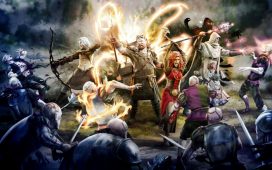From the moment the Paramount ident appeared on the screen with Sonic’s trademark gold rings replacing the usual stars, I knew this movie was for me. Taking my sons to see Sonic the Hedgehog last night, I was aware of the film’s less than effusive reviews, but we are fans of the games, and my boys have grown up watching cartoons such as Sonic Underground and Sonic X, so let’s just say we knew what we were getting into. The Stuart family came here for silly quips, blue skies, speed and mechanised boss battles and we were not disappointed.
Sonic the Hedgehog is no masterpiece. Its story of a young magical hedgehog being sent from his dangerous home planet to stay on Earth, and there discovering friendship while being pursued by sinister government forces, borrows almost all its beats from ET, without much of Spielberg’s gift for lush sentimentalism and overpowering childhood nostalgia.
But what it does do very well is pay homage to the game’s universe. Sonic’s planet is wonderfully depicted as a hyperreal 3D version of the platforming levels I grew up with; the use of the rings as a form of interplanetary portal references how the bonus stages are accessed in some titles in the series. And Jim Carrey’s Robotnik share’s the original character’s obsession with flying armoured gadgets. There are innumerable Easter eggs throughout the film (Gamespot has found 42 and there are bound to be more), from logos for the Sega Saturn console, to the Sanic meme, to the fact that the enemies who chase Sonic off his home world are echidnas, a familiar creature from the games thanks to the Knuckles character.

Part of the fun with the film, as it was with the similarly derided Detective Pikachu is in spotting the references in the background, the deeply encoded titbits only fans will register. Like early Netherlandish artists filling their seemingly straightforward religious paintings and stately portraits with concealed signs and symbols, video game movies exist to be truly read by those in the know. And if I’m the only journalist to draw parallels between the Sonic the Hedgehog movie and the Arnolfini Portrait I can live with that.
One of the key criticisms of modern video game movies is that they are not ushered into existence by the vision of one person but are built by committee. But really, this merely reflects the way mainstream video games are made – by huge groups of artists, coders, designers and writers, in an environment where creative control is rarely exercised by one figure. Blockbuster games, too, are in service to the idea that they must function as mechanical entities. They are products as well as art, and the films reflect this.
I like the way the movie depicts Sonic’s speed in the same way that other turbocharged superheroes such as Flash and Quicksilver have been shown on screen, while retaining game-like elements. Carrey gradually builds up Robotnik’s eccentricities as the film goes on, like a sort of internalised origin story. And the end credits, designed to resemble Mega Drive graphics, are truly lovely: the pay-off sequence halfway through the credit roll earned a gasp of pleasure from the kids in our screening.
Modern video game movies, from Ready Player One to Detective Pikachu and Sonic, don’t really function in the same way as other big commercial tie-ins: they are multilayered in a semiotic rather than emotional or thematic sense; they are fan service, but in a good way. They reward those who grew up playing these games. They play with the viewer.
I left the cinema with my sons discussing what we spotted, theorising about the sequel, keen to play the games again. Maybe we did fall into the trap set for us by conniving marketing departments, but we had a nice night and I was reminded of when my dad unexpectedly brought home a Mega Drive II console one Saturday afternoon in 1992 and we sat and discovered Sega’s brash, impatient, lovable character together. Whatever else can be said about this movie, that was a memory worth rediscovering.














